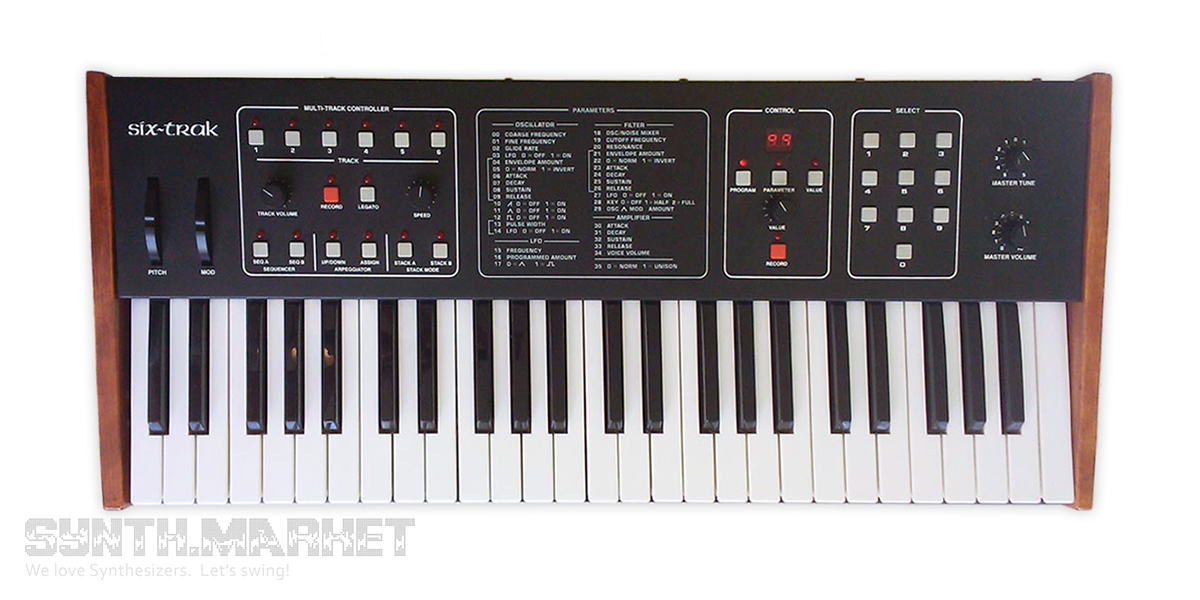One of the world's first multitimbral synthesizers created to work together with a computer (Commodore 64). A computer program allows you to program voices, and together with Drumtraks you can get a complete MIDI system.
The architecture used in Six Trak is intrinsic to many synthesizers of the middle price range of that period: the microprocessor (Zilog Z80) controls an analog voice chip.
CEM3394 was used as a voice, which had a relatively small price along with high stability and satisfactory sound. Each such chip contains:
- One voltage controlled oscillator (VCO) that produces triangular, sawtooth or pulse waveforms.
- A four-stage voltage controlled filter (4 pole VCF) with the ability to set resonance, cutoff frequency and modulation depth. There is a keyboard tracking mode that allows you to create a sound typical of acoustic instrument voice (higher notes have a higher filter cutoff frequency and therefore more harmonics).
- A mixer that blends VCO signals and a built-in noise generator.
- VCA, which allows you to set the depth of modulation by the envelope generator, as well as the volume of each voice.
The synthesizer comprised two independent ADSR envelope generators, LFO (triangle and meander), a six-track sequencer (up to 800 notes), an arpeggiator and 100 patches for saving settings.
The synthesizer parameters could be organized better: all values are entered only with one controller, and all parameters are digitally encrypted (in the center of the front panel there is a table with decoding).
Six Trak can work in polyphonic or unison mode: in this mode, all six VCOs operate to create one note, this mode allows you to achieve "fat" analog sound.
Sequential Circuits Six-Trak was used in the songs of Überzone and Cirrus.









